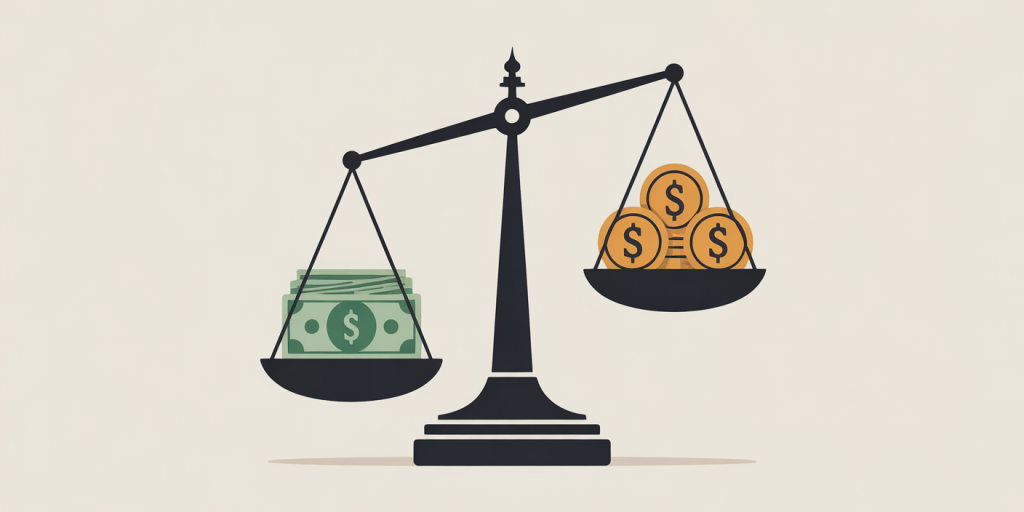Understanding the full value of your time is a crucial step towards smarter financial decisions and improved work-life balance. While most people are familiar with their hourly wage based on paycheck calculations, the “true” hourly wage often remains misunderstood or overlooked. Your true hourly wage accounts for all the hidden costs associated with your job—not just your salary. These costs can include commuting time, unpaid breaks, work-related expenses, and other factors that decrease the effective earnings per hour.

Knowing your true hourly wage empowers you to make more informed spending choices. For example, when faced with a tempting purchase, you might better weigh the time and money sacrificed against the benefit of that item or service. Additionally, this insight helps enhance budgeting and highlights areas where time-saving or cost-cutting measures could improve your financial health.
Understanding the Difference Between Stated and True Hourly Wage
The stated hourly wage is what appears on your pay stub—simply the amount paid for each worked hour. However, this figure often omits numerous additional factors that reduce your effective earnings per hour. For example, if you earn $20 per hour but spend an hour commuting and an additional 30 minutes on unpaid breaks for every eight-hour workday, your actual earnings per hour worked effectively drop.
Let’s illustrate this with a practical example. Assume you work an 8-hour shift for $20/hour, earning $160 a day. If you spend two hours commuting daily and 30 minutes taking unpaid breaks, that’s an extra 2.5 hours that you effectively sacrifice for your job. Dividing your $160 by 10.5 total hours (8 hours work + 2.5 hours overhead) yields an adjusted $15.24 per hour—significantly less than the $20 in your paycheck.
Besides commuting and breaks, work-related expenses also reduce your effective hourly wage. These can include the cost of professional attire, meals, child care, parking, and tools or equipment required for your job. Including these expenses provides a more realistic estimate of your true earnings.
Step-by-Step Guide to Calculating Your True Hourly Wage
Calculating your true hourly wage involves more than just your gross income; it requires adding all job-related hours and expenses to the calculation. Follow these steps to find your true value.
Step 1: Calculate Your Total Earnings Start with your regular pay, including wages, bonuses, and overtime. For salaried employees, divide your annual salary by the total number of hours worked per year. For example, if you earn $50,000 annually and work approximately 2,000 hours per year (40 hours/week × 50 weeks), your nominal hourly wage is $25.
Step 2: Add Unpaid Work Time Identify all extra time spent on job-related activities, like commuting, training, unpaid breaks, or overtime. Include times like preparing for work or cleaning up after a shift. Add these hours to your total work hours to determine total time spent.
Step 3: Calculate Related Expenses List monthly or annual work-related costs such as transportation, meals, clothing, and equipment. For example, if you spend $250 monthly on commuting and $100 on meals, add these to your work expenses ($350 total per month).
Step 4: Compute Total Hours and Expenses Annually Multiply your daily or weekly totals to get annual figures for hours and expenses. For example, 2 hours daily commuting × 250 working days = 500 hours annually. Similarly, $350 monthly expenses × 12 months = $4,200 annually.
Step 5: Calculate Your True Hourly Wage Use the formula:
\[ \text{True Hourly Wage} = \frac{\text{Annual Salary} – \text{Annual Work Expenses}}{\text{Annual Hours Worked} + \text{Annual Extra Hours}} \]
Using the example: Annual salary: $50,000 Annual expenses: $4,200 Annual hours worked: 2,000 hours Extra hours (commuting, breaks): 500 hours
\[ = \frac{50,000 – 4,200}{2,000 + 500} = \frac{45,800}{2,500} = 18.32 \]
This means your actual earnings per hour spent “working” including all overheads are $18.32, not $25.
Practical Examples and Real-World Application

Consider Sarah, a marketing executive earning $60,000 per year. She commutes 1.5 hours each way and spends $300 monthly on commuting costs and work lunches. She also attends unpaid training sessions averaging 100 hours per year.
Sarah works full-time, approximately 2,000 hours a year, but factoring in commuting (1.5 × 2 × 250 workdays = 750 hours) and training (100 hours), her total work-related time is 2,850 hours annually. Expenses add up to $3,600 per year ($300 × 12).
Calculating Sarah’s true hourly wage:
\[ \frac{60,000 – 3,600}{2,000 + 850} = \frac{56,400}{2,850} \approx 19.79 \]
Despite a nominal hourly rate of $30 ($60,000 ÷ 2,000), her true hourly wage is about $19.79. This insight changes how Sarah approaches purchases and leisure time.
By contrast, Mike is a remote software developer earning $80,000 annually who works similar hours but has no commute and a $500 yearly expense on work tools.
Mike’s calculation:
\[ \frac{80,000 – 500}{2,000 + 0} = \frac{79,500}{2,000} = 39.75 \]
Mike’s true hourly wage remains close to $40, highlighting greater effective hourly earnings compared to Sarah.
| Person | Annual Salary | Annual Expenses | Extra Hours (Commute/Training) | Total Hours | True Hourly Wage |
|---|---|---|---|---|---|
| Sarah | $60,000 | $3,600 | 850 | 2,850 | $19.79 |
| Mike | $80,000 | $500 | 0 | 2,000 | $39.75 |
How Knowing Your True Hourly Wage Can Help You Spend Smarter
Being aware of your true hourly wage sheds light on the real cost of your purchases—not just in dollars but in time invested. For example, say you consider purchasing a $100 gadget. If your true hourly wage is $20, that $100 costs you five hours of your time. This realization can encourage you to question whether that gadget is worth five hours of work.
Moreover, understanding the real cost of time encourages smarter spending habits like prioritizing experiences or items that provide lasting value or joy relative to their cost. It also encourages evaluation of convenience spending. For example, paying $15 for food delivery might save you an hour, effectively costing you $5 more than your usual meal. If you value that saved hour, the expense might be justified; if not, it reveals hidden inefficiencies.
Additionally, this awareness aids in budgeting more effectively. Knowing exactly how much your time is worth can prevent impulse purchases, encourage saving, and help you balance work hours with enjoyable, productive leisure activities.
Tips to Optimize Your True Hourly Wage
Increasing your true hourly wage isn’t always about earning more per hour—it can also involve reducing expenses or extra hours.
First, consider strategies to reduce commuting time or expenses. Remote work or flexible hours can lower time lost in traffic or public transit. Ride-sharing or carpooling may reduce gas costs and parking fees. Alternatively, choosing housing closer to work saves both time and money, which increases your effective hourly wage.
Secondly, minimize work-related expenses without sacrificing quality. For instance, packing lunches instead of buying takeaway can save hundreds annually. Buying work clothes on sale or negotiating for expense reimbursements also help keep costs down.
Third, prioritize self-care and better time management. Efficient workflows or batching tasks can minimize unpaid overtime hours. When appropriate, set boundaries for work to prevent burnout and reclaim personal time, which directly impacts your true hourly wage by reducing extra hours worked.
Future Perspectives: The Rising Importance of True Hourly Wage Awareness
As the economy evolves, so does the nature of work and its associated costs. Remote and hybrid work models are reshaping how work time and expenses factor into true hourly wages. With reduced commuting but increased home office expenses, workers will need to reconsider how they calculate their earnings and spending habits.

Moreover, the gig economy has introduced new challenges. Freelancers or contract workers often underestimate the administrative, tax, and uninsured downtime costs related to their jobs. For these individuals, understanding their true hourly wage is essential to maintain financial stability.
Financial literacy programs are increasingly emphasizing the importance of true hourly wage concepts. Governments, employers, and financial advisors recognize that in a fast-paced world with rising living costs, accurate knowledge of one’s income value can drive smarter spending, saving, and career decisions.
In the future, technological tools may automate calculation of true hourly wages, integrating calendars, expenses, and productivity data to provide real-time insights. Such advancements would enhance personal financial management and promote healthier work-life integration for millions.

Deixe um comentário